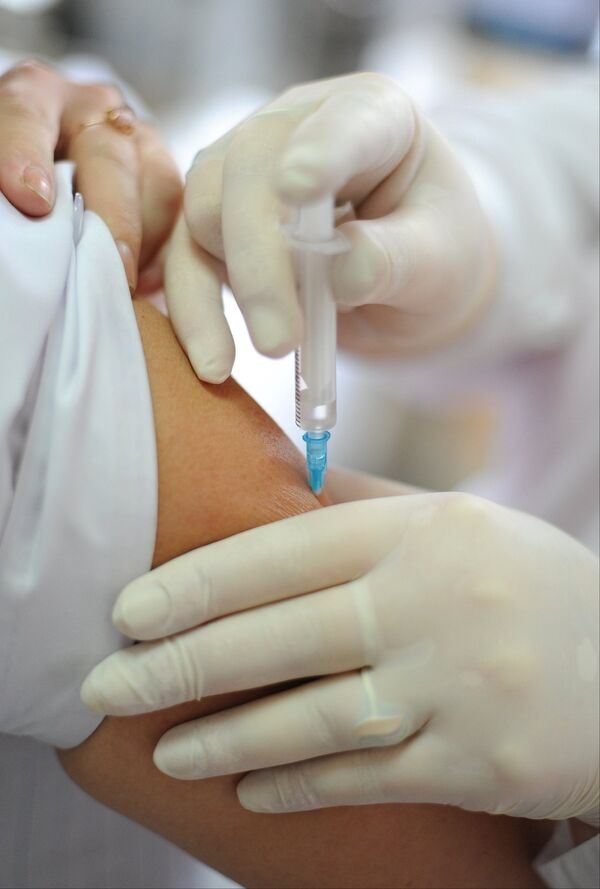MOSCOW, August 5 (RIA Novosti) - A cure for the Ebola virus disease (EVD), which has killed nearly 900 people in a 2014 epidemic in West Africa, may be developed by the US Army Medical Research Institute of Infectious Diseases within two years, Forbes reports.
The possible Ebola cure, called BCX4430, is currently being tested by the US Army Medical Research Institute of Infectious Diseases, Forbes reported.
A new drug developed by the US BioCryst Pharmaceuticals company blocks the reproduction of the virus inside infected cells. Tests on Ebola-infected mice have been highly effective, with more than 90 percent of the rodents cured, scientific journal Nature reported earlier this year. Tests on macaque monkeys, infected with Ebola’s closest relative, the Marburg virus, have shown a similar recovery rate.
The next step is measuring the drug’s effectiveness against Ebola in monkeys, which is planned for next year. “We’re going as fast as we can,” Dr. Bill Sheridan of BioCryst told Forbes, adding that the results so far have been promising.
If tests on monkeys and safety tests on human volunteers go well, researchers will be able to apply for fast-track approval from the US Food and Drug Administration, potentially making the treatment available by the end of 2016. As a “wide spectrum” agent, BCX4430 may also work against SARS and Yellow Fever.
Ebola has a mortality rate of up to 90 percent, and there is currently no virus-specific treatment or vaccine available. The virus is transmitted to humans from wild animals or from person to person. Symptoms include fever, sore throat, muscle pain and headache, followed by decreased liver and kidney function. The outbreak in West Africa is the largest since the identification of Ebola in 1967, with over 1,300 recorded cases.




